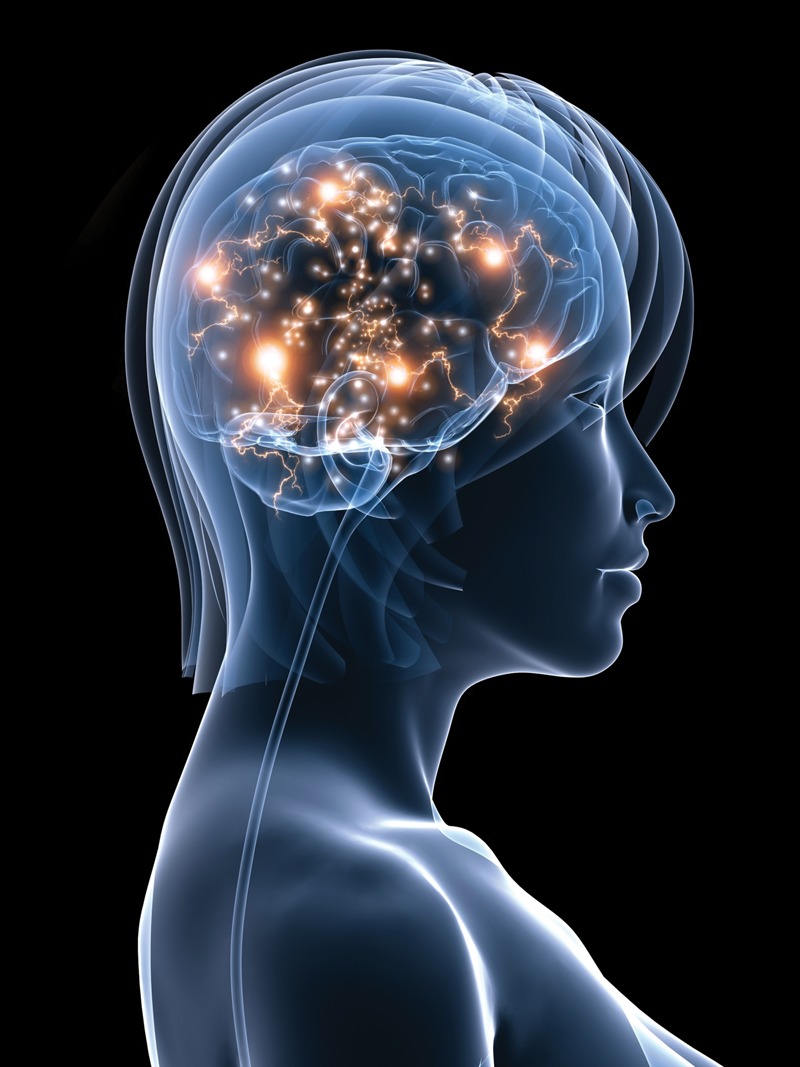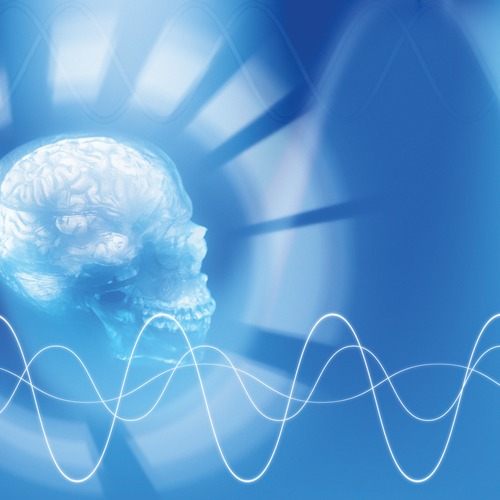Summary
High-frequency deep brain stimulation (DBS) is an established therapy for Parkinson disease (PD), essential tremor, and primary dystonia, and is under investigation for several neuropsychiatric diseases. DBS for PD, in the subthalamic nucleus or globus pallidus interna (GPi), improves tremor, bradykinesia, and rigidity, emotional well-being and sleep, and “on” time without dyskinesias, but may not improve axial and cognitive impairment or speech. DBS in motor thalamus may improve or resolve rest, action, and postural tremor. DBS in the GPi results in functional improvement in hyperkinetic greater than tonic aspects of primary and tardive dystonias. Perioperative risks include hemorrhage and stroke (<2%) and infection (∼8%). The benefit/risk ratio may be optimized with individualized patient selection and the use of an experienced surgical team. DBS is expensive and well-placed unilateral ablation therapy has been shown to be efficacious. Bilateral ablations pose an unacceptable risk of speech impairment and disequilibrium.
 |
High-frequency deep brain stimulation (DBS) is a nondestructive, reversible surgical therapy. DBS has been approved by the Food and Drug Administration (FDA) for the treatment of idiopathic Parkinson disease (PD), essential tremor, and primary dystonia, and obsessive-compulsive disorder via a humanitarian device exemption. DBS is considered an off-label use of an FDA-approved device for treatment of tremor in other conditions, secondary dystonia, and Tourette syndrome, and is under investigation for the treatment of depression, epilepsy (approved in Europe), cluster headache, eating disorders, Alzheimer disease, pain, addiction, and the minimally conscious state. DBS consists of continuous electrical pulses through 1 or more of 4 electrodes on a chronically implanted lead (Medtronic Inc, Minneapolis, MN, St Jude Medical) (not approved in the United States). The DBS lead is placed in target neural circuitry using stereotactic functional neurosurgery and electrophysiologic mapping. The lead is connected to the internal pulse generator (IPG), which is placed in the subclavicular region. The whole system is internalized. Device-related adverse effects of DBS include hemorrhage (2%–4%), infection (5%–8%), lead breakage, and lead migration (rare). MRIs that use a body coil, such as those of the neck and torso, are contraindicated after DBS.
DBS alters the activity of neural circuits within and beyond the field of stimulation. The choice of electrodes activated and the amplitude of the pulses (voltage) will change the location, volume, and shape of the electrical field. Other adjustable parameters include the pulse width and the frequency of DBS. Low pulse widths (PW, 60 μs) mainly affect myelinated axons, whereas longer PW may also affect cell soma (>120 μs). Initially it was thought that the mechanism of DBS was similar to that of ablative therapy (pallidotomy, thalamotomy) because the clinical effect is similar. However, animal studies have shown that DBS appears to activate the output of the target nucleus, largely through myelinated axons. Another hypothesis is that high-frequency DBS overrides or attenuates abnormal hypersynchrony of neural activity.
The following summary and the table outline established indications, contraindications, and outcomes for PD, tremor, and dystonia. However, it is important to recognize that each DBS candidate is considered individually: different circumstances in specific cases may result in decisions by an experienced DBS team to recommend for or against DBS and these can be reviewed in the recent expert consensus paper.1
Idiopathic PD
Basal ganglia targets include the sensorimotor circuitry within the subthalamic nucleus (STN) or the globus pallidus (GPi).
Indications
Indications include idiopathic PD with documented improvement in tremor, rigidity, or bradykinesia from dopaminergic medication. Patients with tremor refractory to medication or severe dyskinesias may do well on DBS despite a smaller off-on differential in their clinical motor assessment. The patient should have had PD for at least 5 years to reduce the incidence of including people with multiple system atrophy or other “atypical” parkinsonian syndromes, which do not respond as well to DBS. An appropriate time to consider DBS is when complications of medical therapy begin to develop (wearing-off syndrome, dyskinesias, a fluctuating response) or if the patient is intolerant of medical therapy or has a suboptimal response to medication for the reasons listed above.
DBS alters the activity of neural circuits within and beyond the field of stimulation.
Contraindications
Contraindications include untreated psychiatric disease or clinically defined dementia.1 Although it has been reported that GPi DBS may be suitable in PD with mild cognitive impairment, when neurodegeneration impairs cognition in PD, the deterioration is not simply due to dopamine deficiency and therefore therapies that work through dopamine modification have little to offer for PD dementia. If a patient is unable to stand or walk in the best treated state preoperatively, then DBS is unlikely to restore him or her to ambulatory status. Thus consideration of DBS should occur before the severe axial motor or cognitive impairment occur. There is no upper age limit; however, as age increases, so does the likelihood of comorbidities that increase the risk of hemorrhage (hypertension, bleeding disorders, amyloid angiopathy) and that make stereotactic targeting more difficult and intraoperative brain shift more likely (brain atrophy).
Outcomes
A meta-analysis of case series of DBS for PD documented an average improvement in mobility of ∼55% from STN DBS alone.2 There is lasting (10 years) improvement in tremor, rigidity, and bradykinesia, and “on” time without dyskinesias.3 Nonmotor functions such as sleep, emotional well-being, and quality of life showed greater improvement “on” DBS compared to medical treatment.4 A recent randomized blinded study reported equivalent motor improvement with STN vs GPi DBS, although with higher stimulation intensities in GPi. STN DBS resulted in greater reductions in medication. Despite the documented improvements from many studies, a common clinical experience is that some patients, who were on disability prior to the procedure, are unable to return to work afterwards. Neither DBS nor dopaminergic medication can prevent or treat later stage signs in PD such as cognitive or axial motor impairments (postural stability, swallowing, speech, and freezing of gait). Therefore, it may be useful to refer good candidates for DBS before they are on disability and before they have been diagnosed with dementia.
Tremor
Indications
The target nuclei for medically refractory postural and action tremor are the ventrolateral thalamic nuclei (Vim, Vop). For complex tremor the STN may also be targeted. Limb tremor responds to contralateral DBS, whereas axial tremor may require bilateral DBS. Isolated head tremor may reflect underlying cervical dystonia, for which GPi may be a more suitable target. Tremor due to structural brain lesions may resolve spontaneously. Thus it is advisable to wait for a year before considering DBS.
Contraindications
Contraindications are similar to those for PD.
Outcomes
Limb tremor of essential tremor, PD, and benign tremulous parkinsonism may improve significantly and even resolve with thalamic or STN DBS. The action tremor of multiple sclerosis (MS) also responds well to thalamic DBS but limb dysmetria does not. Realistic expectations regarding functional improvement are important to clarify with the patient with MS before he or she undergoes DBS. Axial tremor (head, voice, trunk) may require bilateral DBS.
Dystonia
Indications
Indications include primary generalized and focal dystonias (such as cervical and task-specific dystonias). Dystonia is classified as “primary” if the dystonia is not due to another condition and the MRI of the brain is normal. Medically refractory mobile dystonia due to neuroleptic drugs (tardive dystonia), pantothenate kinase–associated neurodegeneration (PKAN), cerebral palsy, and myoclonic dystonia may be considered for DBS.5
If a patient is unable to stand or walk in the best treated state preoperatively, then DBS is unlikely to restore him or her to ambulatory status.
Contraindications
Dystonia secondary to encephalitis or structural lesions have not been shown to improve after DBS; fixed skeletal deformities will not respond to DBS; nor will dementia or untreated psychiatric disease.
Outcomes
Mean outcomes for primary dystonias have shown a 61%–73% improvement in the Burke Fahn Marsden Dystonia Rating Scale lasting up to and beyond 3 years.6 Mobile dystonia (hyperkinetic movement) is more responsive than tonic dystonia (fixed abnormal postures). Outcomes for tardive dystonia, PKAN, and myoclonic dystonia are promising but based mainly on small retrospective case series. Results for DBS for secondary dystonia (such as in cerebral palsy) have been more modest (∼25% improvement in the BFMDRS) but still associated with functional benefit.
Open-label case series of DBS for Tourette syndrome report improvement with DBS in the thalamus (centromedian–parafascicular complex) or GPi. European guidelines recommend waiting until adulthood and until tics are severe (>34 on the Yale Global Tic Severity Scale) and have been present for >5 years.7
Unanswered questions, controversies, and future directions for the use of DBS
In countries where DBS is unavailable, unilateral ablations in the thalamus, GPi, and STN have been used successfully to treat PD, tremor, and dystonia, although the therapeutic effect may not last as long as that from DBS. Bilateral lesions are avoided due to the high risk of worsening speech and equilibrium. Continuing controversies include when to refer a patient with PD for DBS, whether there is a detrimental effect of STN DBS on speech or cognition in PD that is due to neuromodulation itself vs patient-specific characteristics vs surgery, and the role of GPi vs STN DBS in subjects with PD with mild cognitive impairment and in certain forms of dystonia.
In the future, the use of and the indications for neuromodulation may expand in a similar fashion to the expansion in the use of cardiac pacemakers and defibrillators that occurred once the causal role of cardiac arrhythmias was understood and once sensing technology enabled demand-based cardiac pacing. Neuromodulation devices will soon be available for clinical research that can “sense ” and respond to neural activity (feedback-based or demand neuromodulation) and through which the electric field can be “steered, ” so as to affect target rather than surrounding brain structures, such as the internal capsule. These technological advances should improve the therapeutic efficacy and reduce the adverse effects of neuromodulation. However, unanswered questions include whether pathophysiologic “brain arrhythmias” are causal to neurologic symptoms as cardiac arrhythmias are to cardiovascular symptoms and whether the optimal location for DBS is within axonal tracts or within target nuclei.
Approval of DBS for several of the diseases currently under investigation appears probable, despite current regulatory difficulties, due to promising preliminary outcomes. More research is needed to identify optimal candidate selection criteria and to refine the optimal target networks for future neuromodulation therapy.
Correspondence to: hbs@stanford.edu
Footnotes
Correspondence to: hbs@stanford.edu
REFERENCES
- 1. Bronstein JM, Tagliati M, Alterman RL, et al.. Deep brain stimulation for Parkinson's disease: an expert consensus and review of key issues. Arch Neurol 2011;68:165–171. [DOI] [PMC free article] [PubMed]
- 2. Weaver F, Follett K, Hur K, Ippolito D, Stern M. Deep brain stimulation in Parkinson disease: a metaanalysis of patient outcomes. J Neurosurg 2005;103:956–967. [DOI] [PubMed]
- 3. Castrioto A, Lozano AM, Poon YY, et al.. Ten-year outcome of subthalamic stimulation in Parkinson disease: a blinded evaluation. Arch Neurol Epub 2011 . [DOI] [PubMed]
- 4. Deuschl G, Schade-Brittinger C, Krack P, et al.. A randomized trial of deep-brain stimulation for Parkinson's disease. N Engl J Med 2006;355:896–908. [DOI] [PubMed]
- 5. Bronte-Stewart H, Taira T, Valldeoriola F, et al.. Inclusion and exclusion criteria for DBS in dystonia. Mov Disord 2011;26(suppl 1):S5–S16. [DOI] [PMC free article] [PubMed]
- 6. Tagliati M, Krack P, Volkmann J, et al.. Long-Term management of DBS in dystonia: response to stimulation, adverse events, battery changes, and special considerations. Mov Disord 2011;26(suppl 1):S54–S62. [DOI] [PubMed]
- 7. Muller-Vahl KR, Cath DC, Cavanna AE, et al.. European clinical guidelines for Tourette syndrome and other tic disorders: part IV: deep brain stimulation. Eur Child Adolesc Psychiatry 2011;20:209–217. [DOI] [PubMed]



